KalugaMapSeptember 22, 2007 A dwarf and a guy with a “Zhiguli” car are fishing in the city’s water reservoir, standing on a pier with a “Good morning, beloved racoon!” sign. 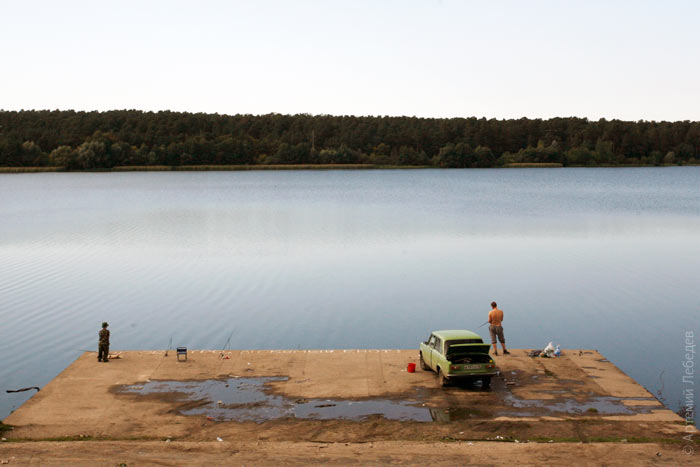 Behind them you can see the tip of the “Vostok” spacecraft peeking out from behind the trees. 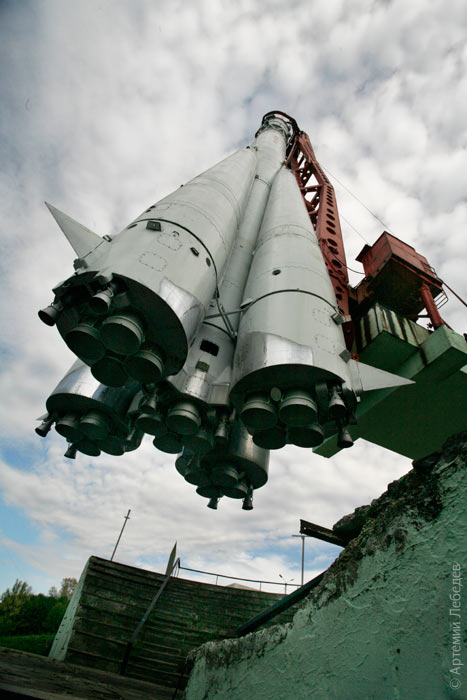 We’re standing in front of the space museum. This image used to be printed on all the matchboxes. 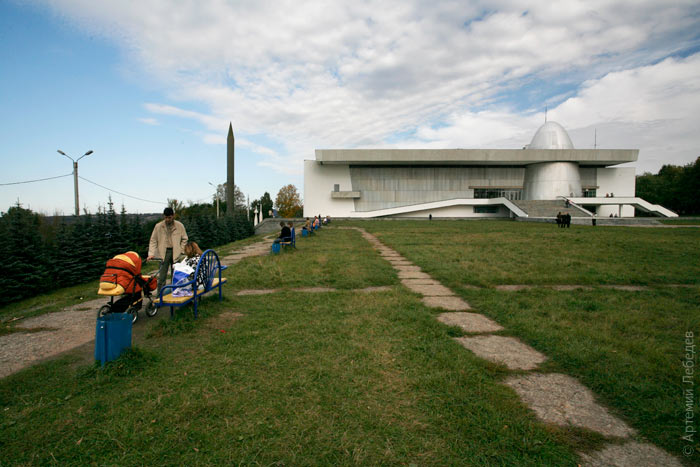 Tsiolkovsky spent a large chunk of his life in Kaluga, so they’ve got something space exploration-related on every corner. For instance, opposite the museum there’s a seesaw shaped like an airplane. 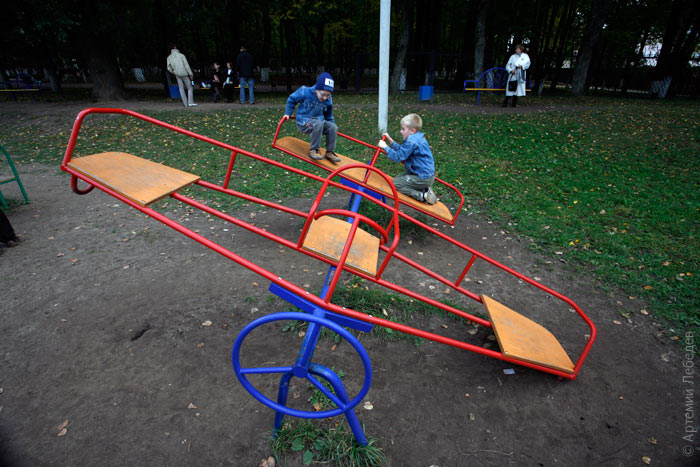 The town is being built up at full tilt. You can tell that barely ten years ago it was a total village. All traces of the past will be completely gone soon. 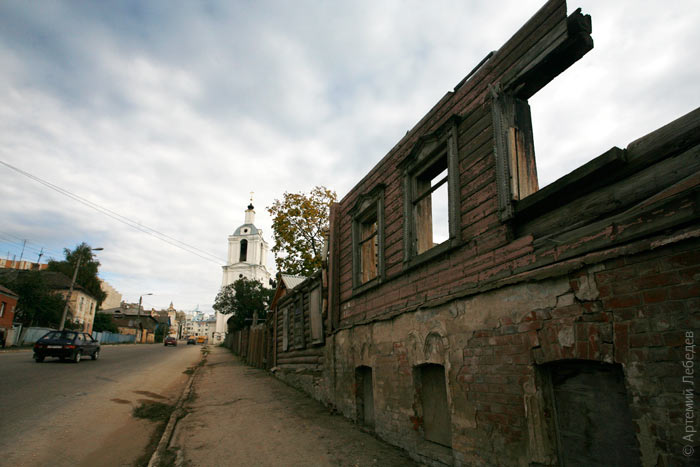 Architecturally insipid, yet expensive residential buildings are the first to pop up. It goes without saying that they build them on sites with great views. 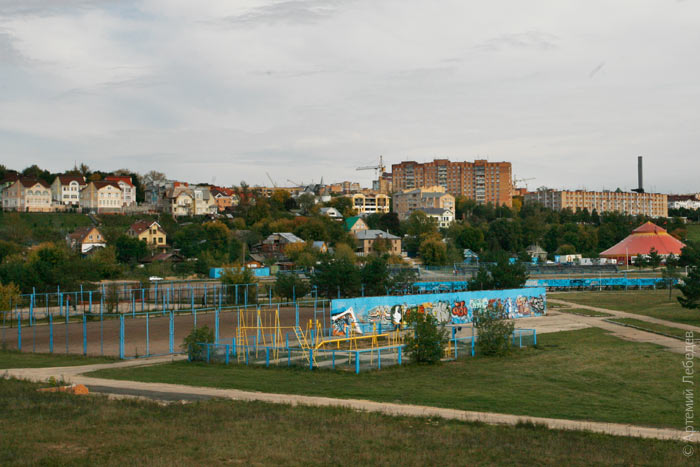 Ancien régime house numbers still hang here and there. These are rare specimens — the numbers are cut out of the metal, not installed under glass like in Serpukhov. 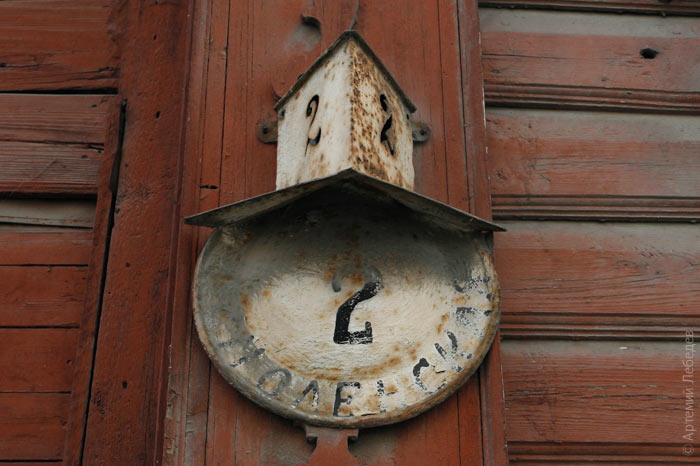 Kaluga’s bus stop designers have a motto — “Nothing but the best for the people!”. 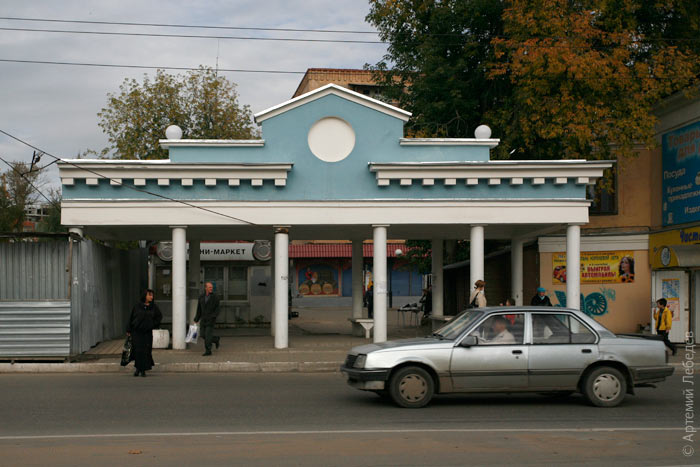 You can spend hours standing in the street just watching passers-by. The characters you see bear no resemblance to their Muscovite counterparts. First of all, they’re all dressed in a risible provincial fashion (from the vantage point of a big smoke chauvinist, I hasten to add). Second, there are people’s faces. The faces you see here are poems, they should really publish an anthology. By the way, there are lots of winos in the street — they’re like the characters in old jokes, from yesteryear. 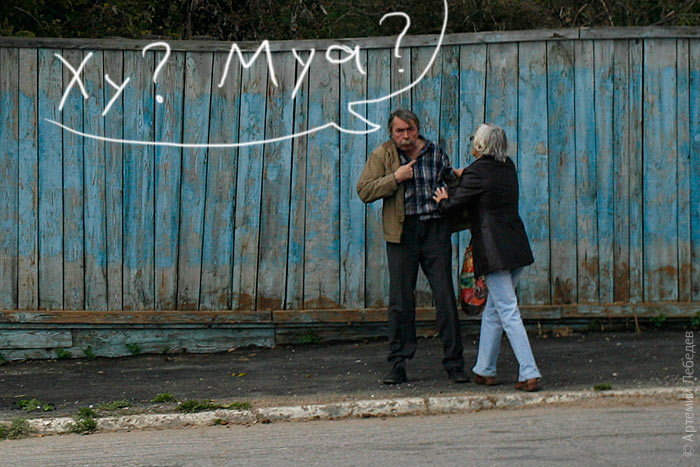 Who? Moi? Nonetheless, Kaluga has its sights firmly set on the future. 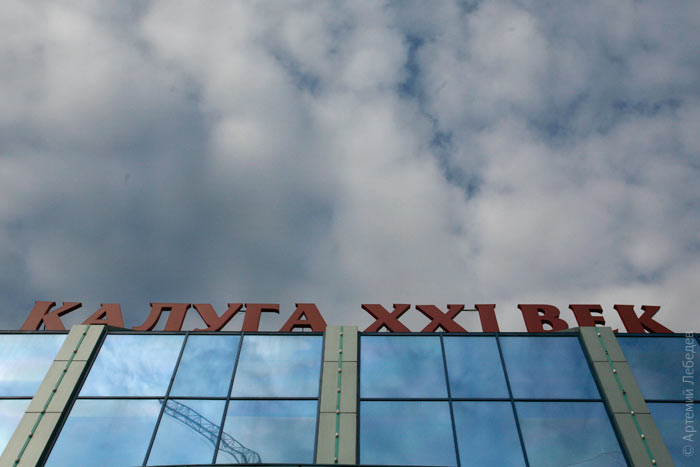 Kaluga XXI Century The locals are keeping up with the rest of the country, having made Kaluga’s first narrative film, which is called “Damp firewood”. No, this is not a lame “Comedy club” joke. It’s an actual movie, the premiere is coming up soon. This is the first poster promoting the first film ever made in Kaluga. On it all of the characters are looking at the ground, despondent, as if auguring the spectacular success of Kaluga’s filmmaking industry. 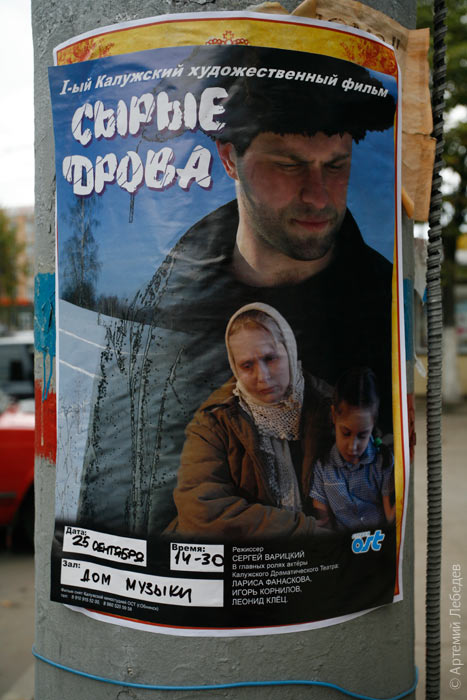 Kaluga bus shelter with elegantly framed windows. 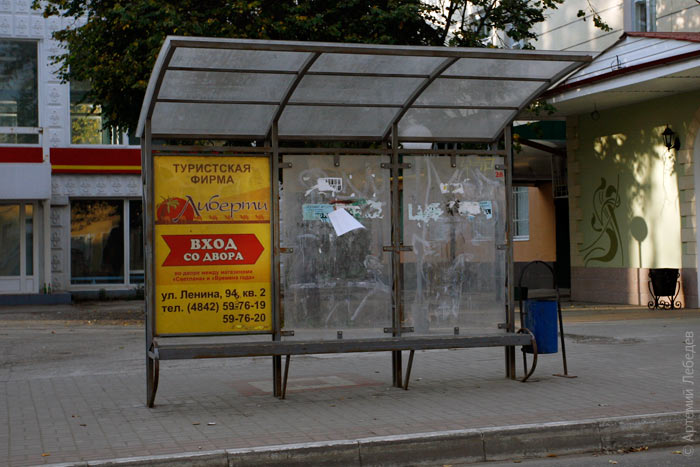 The locals prefer bus shelters of their own design. 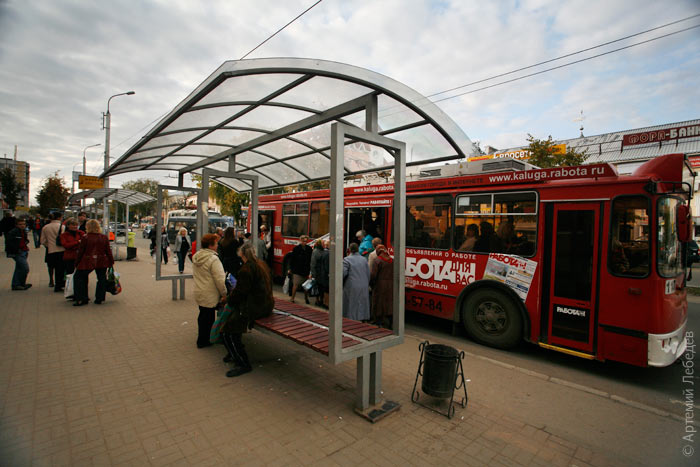 Advertising. This is how the word “unprecedented” is spelt in the local Kaluga vernacular: 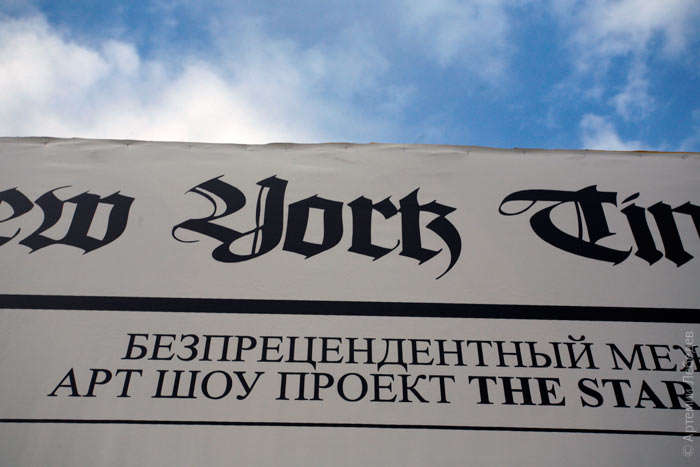 Unprecendented This big billboard stand also counts as advertising space. The big billboard is advertising enigmatic mathematical operations. 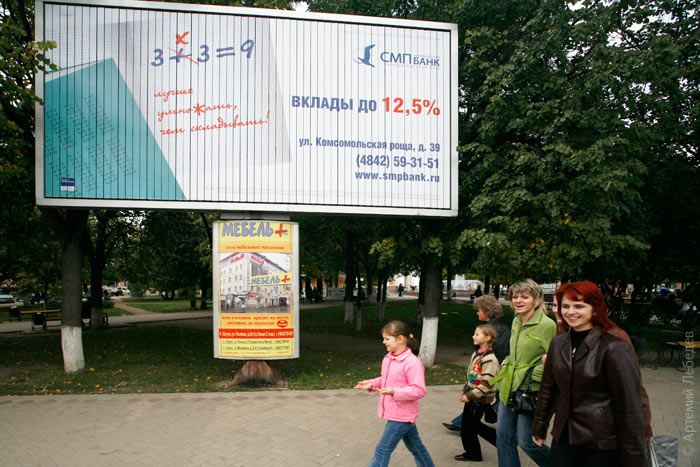 Fur coats have arrived at the Artists’ House in anticipation of the change in seasons. 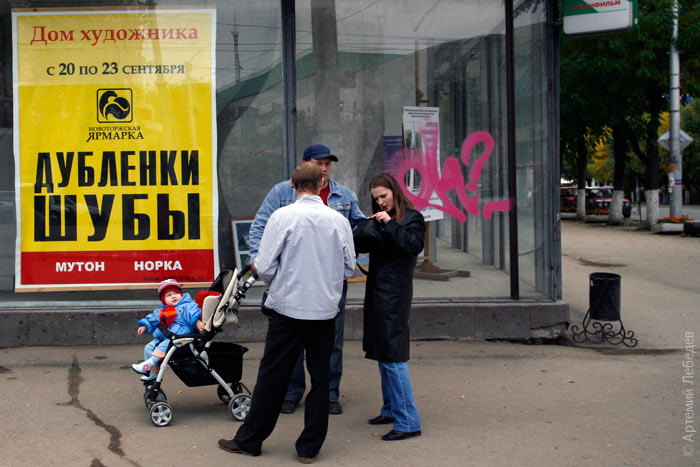 Urban advertising containing a classic mistake — the comma is missing (cf. Irkutsk and Yaroslavl). On the bright side, they put in three exclamation marks. 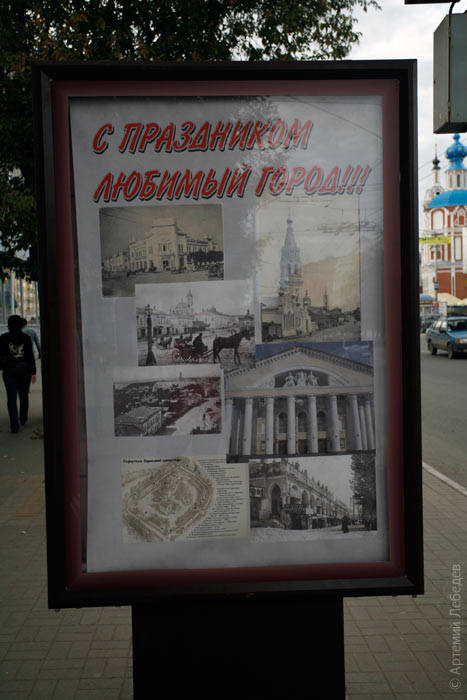 Congratulations our beloved city!!! Singularly meaningless text advertising shoes. There’s a new generation of copywriters in town and they sure love to use and abuse the phrase “awakening desire” — here they’ve got it twice. 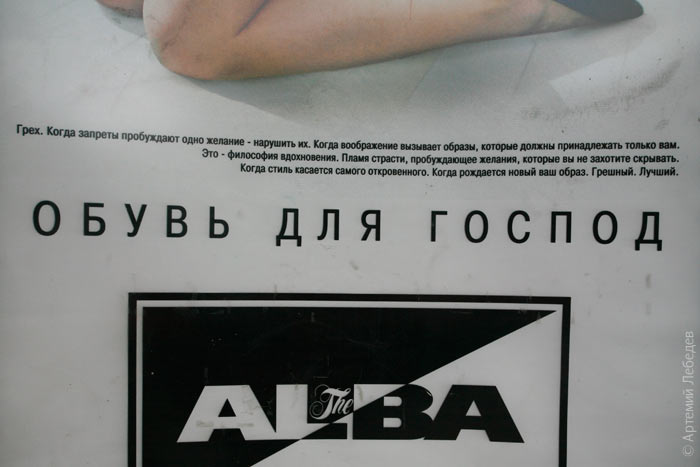 And to wrap up our review of advertising in Kaluga, here’s an example of a genre that’s guaranteed to please — traffic police creations. A paedophile puppeteer with a moustache that instils trust is using his hands to demonstrate the scope of his responsibilities. 
Interesting local telephone demibox — the middle bit is painted white. It’s more cheerful than the one in Rostov-on-Don, that’s for sure. 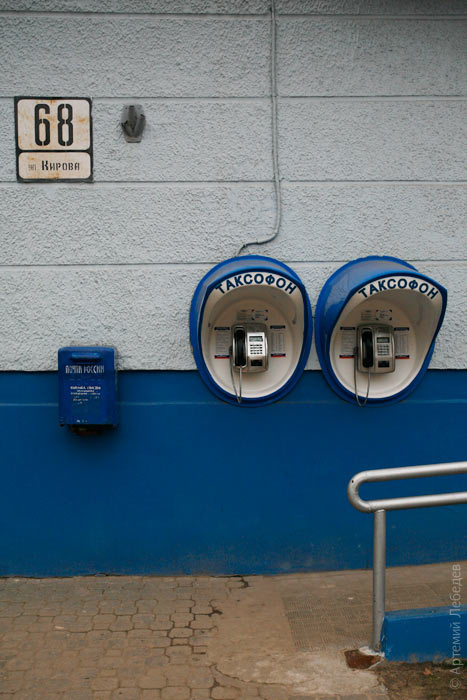 The previous model still crops up. For instance, in front of the concert hall, where they don’t cut down old trees, adding a note of drama to their trunks instead. 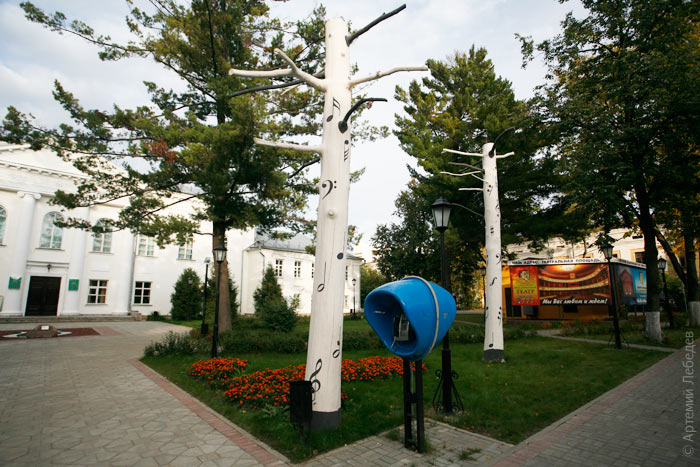 The colours of the Russian flag are painted on all of the lampposts (for some reason the white stripe is missing on half of them). All of the lampposts are numbered with a white number on a blue background. They count from zero on every street. 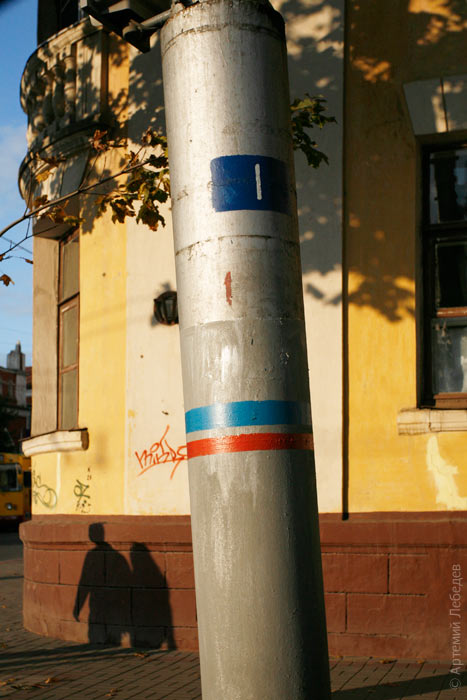 The local indoor market and its arrows are very beautiful. In front of it there’s a typical city bus with gas cylinders on the roof. 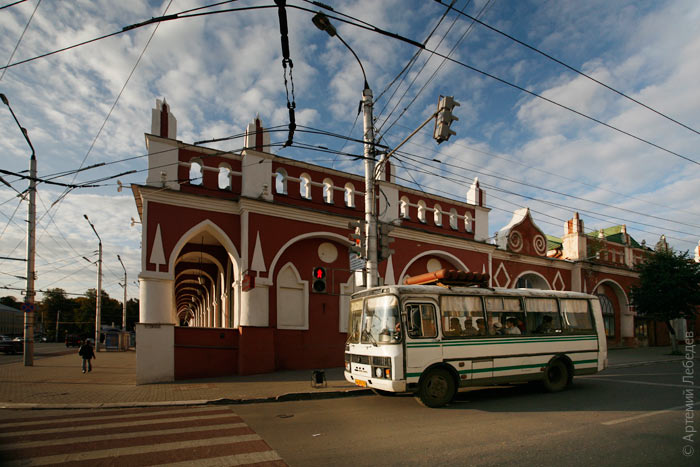 The lampposts are particularly elegant. 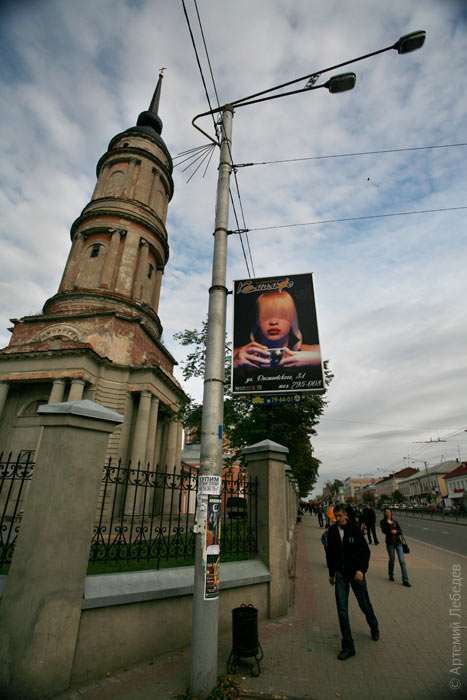 We came across a building with an earthquake-resistant projection window, just like in Petropavlovsk-Kamchatsky. What’s it doing here? 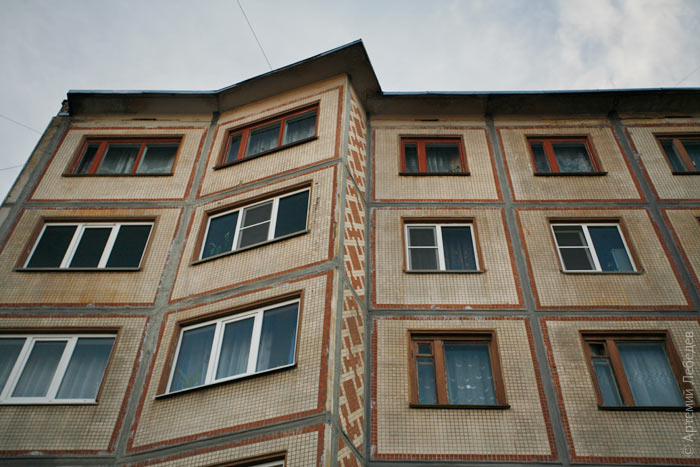 The storm water drain grates are exceptionally large. Although not quite as big as the craters in Taiwan, it’s likely that they’ve broken the national record. 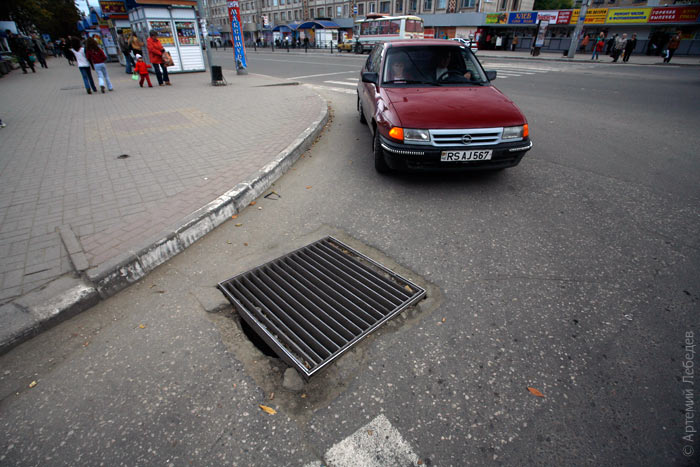 On the central thoroughfare — an opportunistic children’s art exhibition on the theme of blood donation. For instance, here is a piece by 12-year old Denis Starostin entitled “Blood in the name of life”. 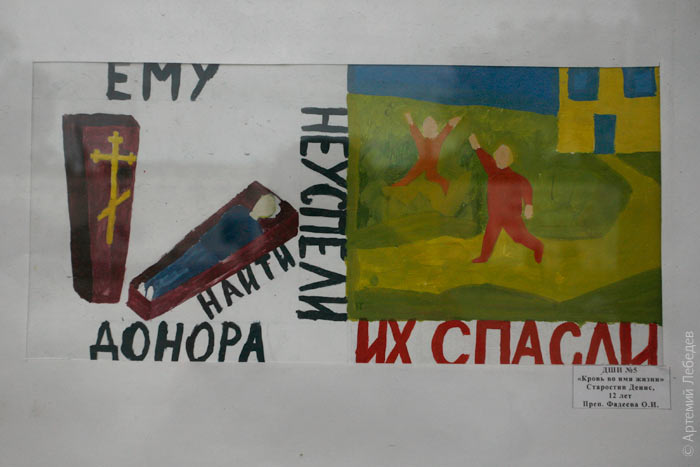
They didn’t find him a donor in time. A sign appeared on the side of the small shop, right under the heading “Death to preachers”: “Preacher Andrei presses a spoon against the back of your head during confession, he breaks bones”. 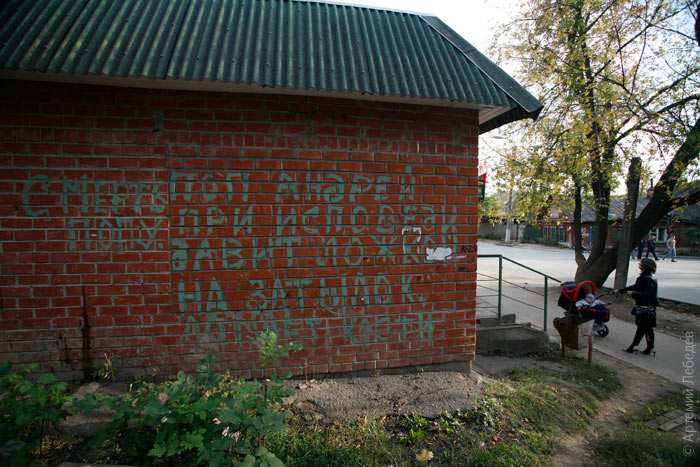 Nothing’s changed on Victory Square, barring the addition of a cash machine. There’s also a sign here to the glory of the Soviet people-people, which is just begging to be noticed and deciphered. 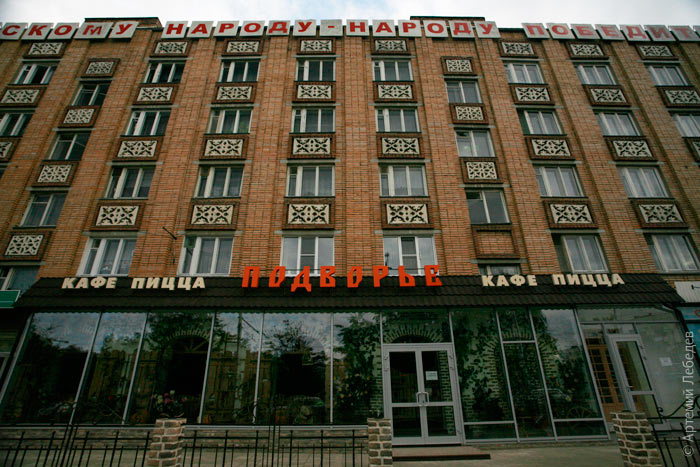 How do we combine space and the triumph over fascism? Put in a stele in honour of the victory over fascism and place a satellite in the woman’s hand. After all, Tsiolkovsky once lived here. 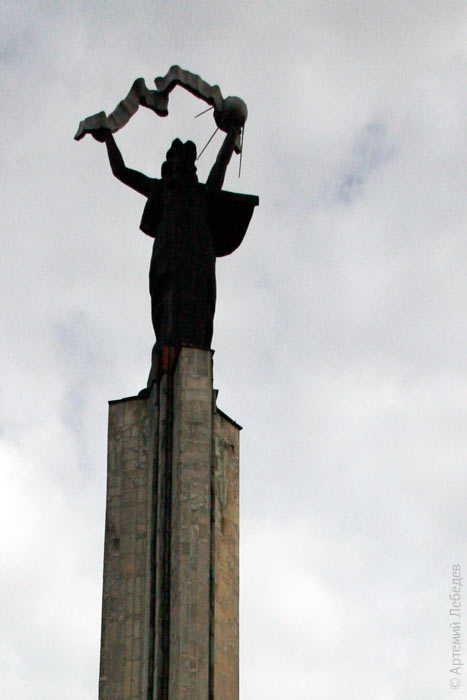 In baffling Russian tradition, all newlyweds come to visit military graves like these ones on their big day. 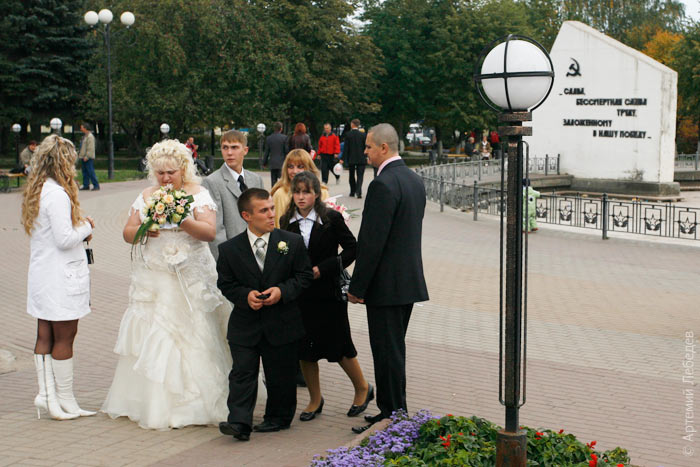 The green tree is growing on the side with green balconies, the yellow one on the side with yellow embellishments. By the way, there are lots of green window frames in Kaluga. And plenty of pixelated Ukranian embroidered shirt- like ornaments on buildings. 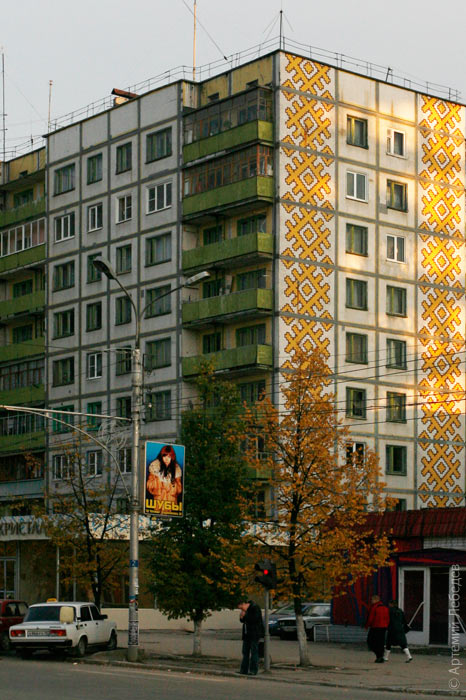 The day is drawing to a close; it’s time to head back to Moscow. Kaluga is a very pleasant city. The people are serene, the streets verdant and quiet. The coffee they serve at the “Senior Cappuccin” café is terrible (the espresso is sour, the latte tastes like cat’s pee), but there are more important things in life, I’m sure you’ll agree.  Once it’s completely dark in Kaluga, Tsiolkovsky’s grave, which is in a park, is illuminated with UV lights, as if it were in a nightclub. 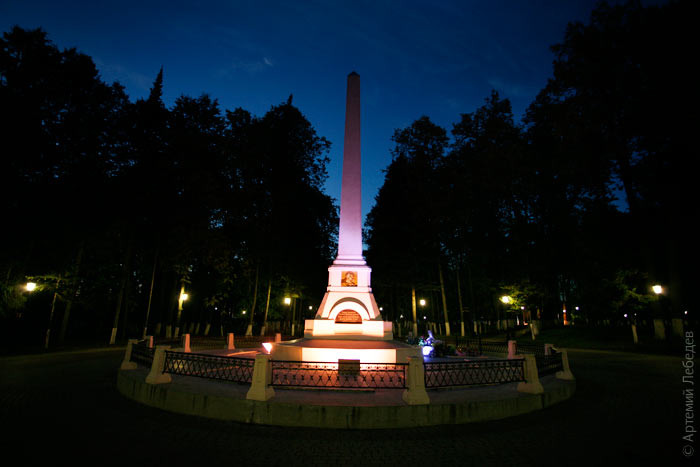 Meanwhile, in front of the park entrance there’s a wall with a quote on it. The lights on it start twinkling — like stars, but faster. 
“Our planet is the cradle of the rational mind, but one cannot live in a cradle forever.” The quote drops hints to readers that its author himself left the cradle of the rational mind — and that it’s possible he was still alive when he did so. |